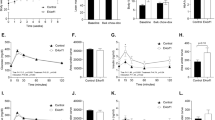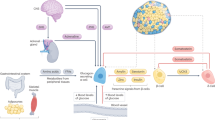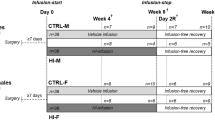Abstract
Summary: Fasting pancreatic glucagon was observed in Jamaican infants during malnutrition and subsequent recovery. Rehabilitation in two groups of children with isocaloric diets rich either in carbohydrate or fat produced no differences in the rate of weight gain. During malnutrition, plasma pancreatic glucagon concentration was 104 ± 11 (n = 20) pg/ml (mean ± S.E.) significantly lower than during recovery when the maximum value was 180 ± 24 (n = 13) pg/ml during the later recovery phase. After clinical recovery glucagon levels declined to 127 ± 13 (n = 15) pg/ml. Plasma insulin followed a similar pattern, increasing significantly during catch-up growth and declining after recovery. Slower rates of growth were associated with the simultaneous decline in the concentrations of both hormones after clinical recovery.
Speculation: Low pancreatic glucagon and insulin levels in protein energy malnutrition are adaptive mechanisms to conserve tissue by reducing anabolic and catabolic processes. The increases in hormone concentrations during recovery reflect the increased metabolism associated with growth, and the anabolic actions of insulin dominates glucagon action to promote new tissue synthesis and dramatic increases in weight gain.
Similar content being viewed by others
Log in or create a free account to read this content
Gain free access to this article, as well as selected content from this journal and more on nature.com
or
Author information
Authors and Affiliations
Rights and permissions
About this article
Cite this article
Payne Robinson, H., Seakins, A. Fasting Pancreatic Glucagon in Jamaican Children during Malnutrition and Subsequent Recovery. Pediatr Res 16, 1011–1015 (1982). https://doi.org/10.1203/00006450-198212000-00008
Issue date:
DOI: https://doi.org/10.1203/00006450-198212000-00008
This article is cited by
-
Severe childhood malnutrition
Nature Reviews Disease Primers (2017)



